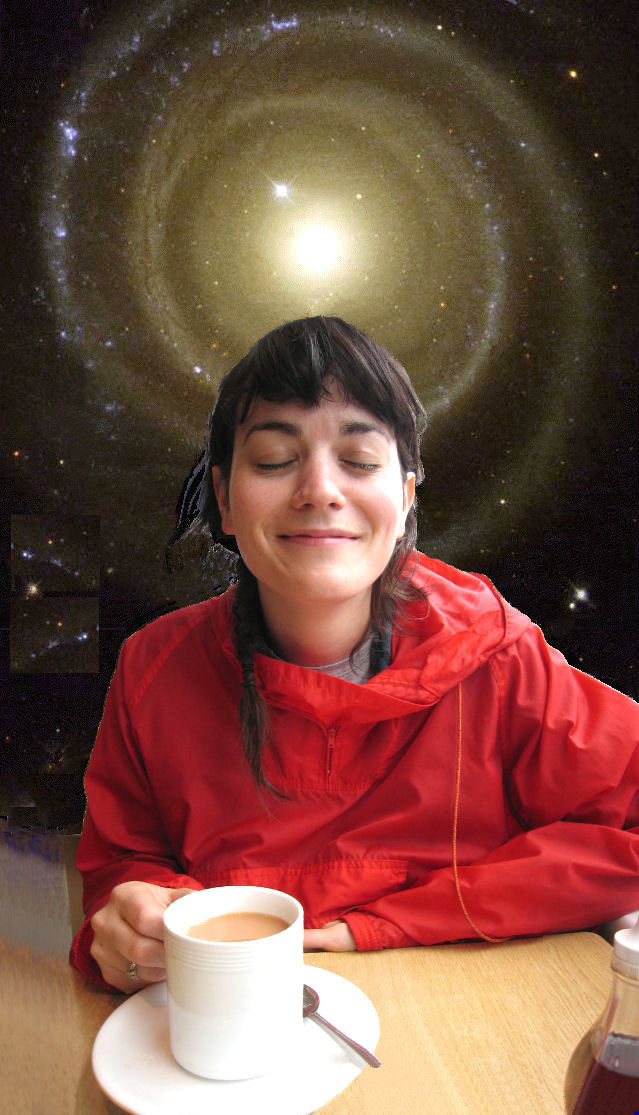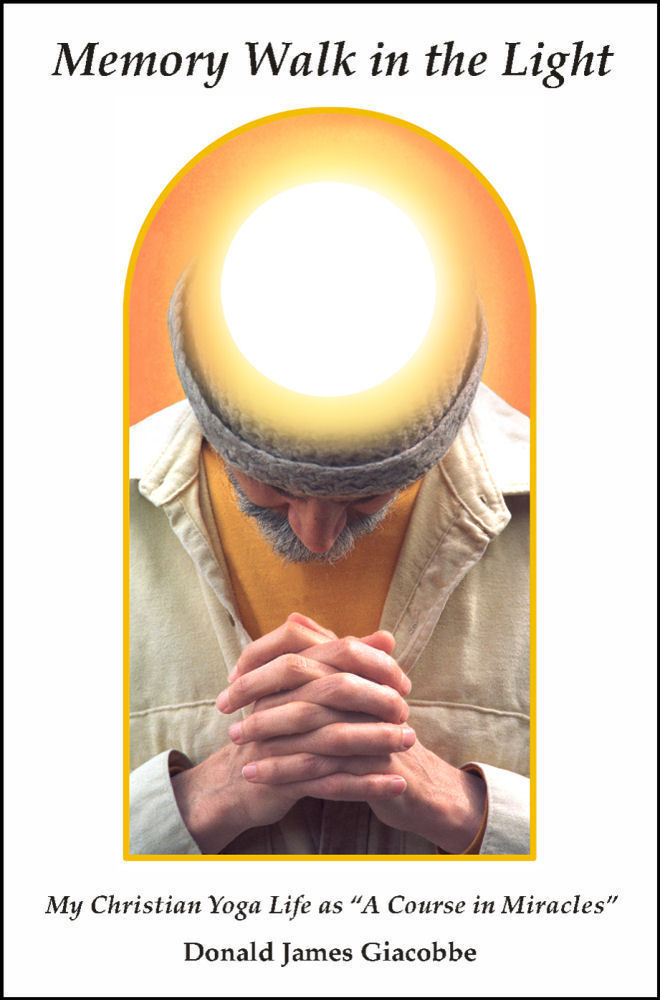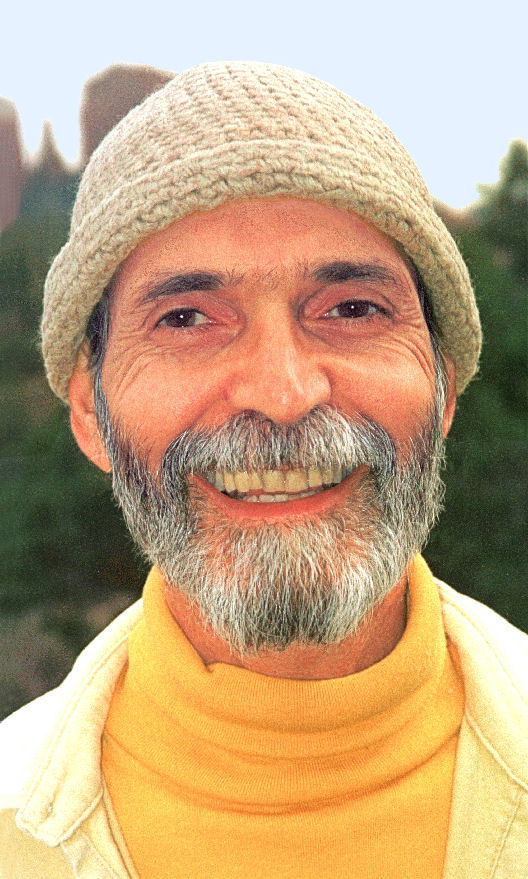Miracle Raja Yoga

You can stop for a "holy instant" at any time.
Thus you can have a glimpse of eternity
even while having a cup of tea.
OVERVIEW OF MIRACLE RAJA YOGA
Miracle Raja Yoga helps you call upon the divine presence within by emphasizing meditation and contemplation. This form of
Miracle
Yoga includes all eight members of Patanjali’s classical yoga, plus one
additional member. The first member is yamas,
ethical restrictions, such
as harmlessness, truthfulness, lack of covetousness, and sexual purity.
The
second member is niyamas, ethical observances,
which would include
contentment, moderation, asceticism as guided by the Spirit, study of
scripture
or spiritual writing, individual and/or group forms of prayer and
worship, and
surrendering to God’s will in all areas of your life.
Both of these first members would fall into the general category of
“loving
your neighbor as you love yourself” and developing purity of heart.
These two
members require your careful attention throughout your spiritual
journey. It
would be a mistake to leave these members behind because of advancing
to the
other members, since these members form a foundation for spiritual
progress. In
particular as you make progress from one member to another, there is a
tendency
in accomplishing these steps to also acquire a certain degree of pride
in your
achievements. Consequently, it is essential to be aware of the need for
humility, which is a requirement for developing purity of heart. If you
notice
pride emerging at times, you can just observe it without encouragement
and
without self-condemnation. Like letting go of stray thoughts in
meditation,
sometimes negative attributes tend to fall away by themselves, if you
do not
cling to them and do not try to push them away.
The third and fourth members, asanas and pranayama,
are the body
postures and breathing practices that are included in hatha yoga, which
also
may include deep relaxation. These hatha yoga practices are important
ways of
preparing the body for making progress in meditation and contemplation.
The fifth member is pratyahara, the withdrawal of
the senses from the
sense objects. This practice restricts outward desires and turns the
awareness
toward inner desires that reflect seeking the divine.
The sixth member is dharana, concentration, which
is intermittent mental
focusing. The seventh member would be dhyana,
meditation, which is
continuous mental focusing. This is the holding of one thought in the
mind
continuously. The idea of contemplation as the overshadowing of the
Holy Spirit
that creates an inner absorption is not included in classical yoga, but
in my
opinion it needs to be considered a separate member of Miracle Raja Yoga.
Consequently, the eighth member of Miracle Raja Yoga is contemplation,
which is the letting go of all thoughts that occur in wordless
attunement in
contrast with meditation, which is the holding of one thought
continuously.
Furthermore, St. Symeon the New Theologian sets the example of the soul
who
experiences divine union while still in this world and who allows all
the lower
faculties to be filled with the divine light. This is similar to the
tantric
yoga ideal of jivanmukta—the seeker who is freed
while still living in
this world. This is the ultimate goal of Miracle Yoga, the total
integration of
the physical, emotional, mental, and intuitive perfectly joined and
under the
influence of your true spiritual nature. However, divine union does not
have to
be accomplished in this life in order to be successful in your practice
of
Miracle Raja Yoga. If your life is spent seeking divine union, your
seeking
will prepare you to awaken to your true nature in God when this life is
completed.
In order to practice Miracle Raja Yoga, you will have to choose a form
of
meditation and/or contemplation that best meets your individual needs.
Christian Yoga Meditation is a good choice because this combination of
six
techniques integrates well with the other aspects of Miracle Yoga. In
the first
technique of Christian Yoga Meditation, focusing on the navel center is
related
to the physical body, which is the vehicle for expressing dedicated
action in
Christ karma yoga. In the second technique of Christian Yoga
Meditation,
focusing on the heart center is related to emotions and specifically to
love,
which is important for expressing devotion in Miracle Bhakti Yoga. In
the third
technique of Christian Yoga Meditation, focusing on the brow center is
related
to the mind, which is the means for expressing the intellectual
discernment
needed to practice Miracle Jnana Yoga. The final three techniques of
Christian
Yoga Meditation involve the activation of the crown center and are
related to
awakening universal awareness. The awakening and integration of this
higher
awareness is the purpose of Miracle Raja Yoga. The full explanation of
how to
practice Christian Yoga Meditation and detailed descriptions of other
Christian
meditation practices are provided in the book titled Christian
Meditation
Inspired by Yoga and “A Course in Miracles”: Opening to Divine Love
in
Contemplation. This book would very much benefit Course
students because it
emphasizes experiencing the divine contact called the "holy instant."
The holy instant is an experience of letting go of the past and future
that allows
you to enter the eternal present moment.
Yet
in the holy instant you unite directly with God, and all your brothers join in
Christ. Those who are joined in Christ are in no way separate…. For Christ is
the Self the Sonship shares, as God shares His Self with Christ…. With Love in
you, you have no need except to extend it. In the holy instant there is no
conflict of needs, for there is only one. For the holy instant reaches to
eternity, and to the Mind of God. And it is only there love has meaning, and
only there can it be understood.1
This meditation manual includes all the various forms of attunement in
the
Course. However, it is also includes methods not specifically mentioned
in the
Course, such as the Jesus Prayer of the Heart, which involves repeating
the
name of Jesus. Thus this book is written for any Christian seekers
interested
in learning Christian meditation and contemplation regardless of their
spiritual philosophy.
The Course is actually very traditional in its overall approach to
meditation.
It introduces many different ways of seeking the divine vertically and
leaves
the impression that focusing on your purpose of seeking God is more
important
than the specific technique chosen. This flexibility in the Course in
regard to
techniques is an indication that a variety of techniques, including
yoga
methods, would be acceptable if the emphasis is placed primarily on the
intention
of seeking God rather than on the techniques themselves. Your attitude
is the
single most important factor in determining how effective your
meditation will
be. For this reason the Course goes to great lengths to fully
articulate the
best attitude for meditation. Any meditation method always has two
components.
One is attention and the other is intention. Of these two the Course
places the
greatest emphasis on your intention. The Course specifically encourages
the
seeker to be aware of the sacredness, the holiness, of entering the divine
presence.
Think of what
you are saying; what the words mean.
Concentrate on the holiness that they imply about you; on the unfailing
companionship that is yours; on the complete protection that surrounds
you.2
While no
particular approach is advocated for this form of
exercise, what is needful is a sense of the importance of what you are
doing;
its inestimable value to you, and an awareness that you are attempting
something very holy.3
1.
T-15.V.10:8-9, 11:3-6, p. 314
2. W-41.9:2-3, p. 64
3. W-44.8:1-3, p. 70

EXPERIENCING FREEDOM FROM BODY LIMITATIONS
Since it is your
purpose to awaken, let’s address what awakening really means at an experiential
level. The concept of awakening is a fundamental idea of Eastern philosophy. In
Zen Buddhism the Buddha is considered the Awakened One, and his experience of
awakening is called “enlightenment.” There are lower levels of enlightenment
and higher levels. Examples of the lower level are seeing a tree, looking at a
sunset, or hearing a bird chirp and then experiencing a deep sense of oneness.
These are examples of joining with what you are experiencing so there is no
feeling of separation. There is a sense of being lifted beyond the boundaries
of your body. In the Course the statement, “I am not a body. I am free. For I
am still as God created me,” is repeated twenty times for emphasis. The freedom
you feel when the body limitations are lifted is called a “transportation” in
the following quotation:
If you will consider what this “transportation” really
entails, you will realize that it is a sudden unawareness of the body, and a
joining of yourself and something else in which your mind enlarges to encompass
it. It becomes part of you, as you unite with it. And both become whole, as
neither is perceived as separate. What really happens is that you have given up
the illusion of a limited awareness, and lost your fear of union. The love that
instantly replaces it extends to what has freed you, and unites with it. And
while this lasts you are not uncertain of your Identity, and would not limit
It. You have escaped from fear to peace, asking no questions of reality, but
merely accepting it. You have accepted this instead of the body, and have let
yourself be one with something beyond it, simply by not letting your mind be
limited by it.
This can occur regardless of the physical
distance that seems to be between you and what you join; of your respective
positions in space; and of your differences in size and seeming quality. Time
is not relevant; it can occur with something past, present or anticipated. The
“something” can be anything and anywhere; a sound, a sight, a thought, a
memory, and even a general idea without specific reference. Yet in every case,
you join it without reservation because you love it, and would be with it. And
so you rush to meet it, letting your limits melt away, suspending all the
“laws” your body obeys and gently setting them aside.1
This kind of
transportation is the same as what the Zen Buddhists would call a mild
experience of enlightenment because it is a sudden experience of oneness, and
this oneness can be triggered by anything. The Course does not use the term
“enlightenment,” but it does say this transportation is similar to what was
described previously as the holy instant. “Yet in the holy instant you unite
directly with God, and all your brothers join in Christ. Those who are joined
in Christ are in no way separate. For Christ is the Self the Sonship shares, as
God shares His Self with Christ.”2 This joining with God and with all your
brothers that occurs in the holy instant may happen inwardly in meditation, in the
joining of a holy relationship, or in other events in daily life. But the vast
majority of holy instants that occur are not typically as outwardly dramatic as
this transportation, even though there are similarities.
The body is not attacked, but simply
properly perceived. It does not limit you, merely because you would not have it
so. You are not really “lifted out” of it; it cannot contain you. You go where
you would be, gaining, not losing, a sense of Self. In these instants of
release from physical restrictions, you experience much of what happens in the
holy instant; the lifting of the barriers of time and space, the sudden
experience of peace and joy, and, above all, the lack of awareness of the body,
and of the questioning whether or not all this is possible.3
The Course is
making the point that the release of body limitations and the experience of
your freedom are directly related. The more you can let go of the body, the
more you will experience your freedom. When Zen Buddhists experience the
deepest levels of enlightenment, and likewise when Tantric yogis experience the
most profound levels of samadhi, the body is released altogether, and there is
the greatest experience of freedom, which is always an experience of blazing
light. It is the blazing light of awakening, and so that is why the reference
in the Course to seeing a blazing light is not a metaphor. Since the body
awareness is released, this blazing light is not seen with the physical eyes.
It is an inner spiritual vision that is literally seen by the mind. Traditional
Christian mysticism uses the word “illumination” to describe the highest
vision, which is equivalent to the experience of light in the most profound
enlightenment and samadhi.
Only the mind is capable of illumination. Spirit is already illuminated and the body in itself is too dense. The mind, however, can bring its illumination to the body by recognizing that it is not the learner, and is therefore unamenable to learning. The body is, however, easily brought into alignment with a mind that has learned to look beyond it toward the light.4
1. T-18.VI.11:4-11, 12:1-5, p. 3872. T-15.V.10:8-10, p. 314
3. T-18.VI.13:2-6, pp. 387-388
4. T-2.V.6:3-6, p. 26

unless you fail to call upon the light.
CONTEMPLATION IN THE COURSE
There
is no one method of meditation
recommended consistently
throughout the
Course. The Course Workbook
lessons start with easier methods first and gradually
include a variety
of options leading to more advanced methods. Workbook lessons sometimes
include
visualizations and often require repeating of an affirmation for the
day. A few
lessons include repeating the Name of God. The earlier lessons lead in
the
direction of wordless contemplation, which is the most advanced form of
attunement. Since contemplation is difficult for many seekers, a method
called Christian
Yoga Meditation is recommended for Miracle Raja Yoga because
it leads in
the direction of contemplation. This is actually a combination of six
techniques that incorporate focusing on certain spiritual centers in
the body,
called chakras in yoga terminology. The section
below is an excerpt from
the book Christian Meditation Inspired by Yoga and “A Course
in Miracles”: Opening
to Divine Love in Contemplation. This excerpt describes
wordless
attunement, commonly called "contemplation," as it is presented in the
Course:
The
most common method of attunement recommended in the Course is mentally
focusing
upon the divine presence. This involves mentally repeating an
affirmation of
inspiring words only if thoughts temporarily distract you from feeling
the
divine presence. The beginning Workbook lessons all include
affirmations to
repeat as part of the practice. Workbook Lesson 124 states: “This is
our first
attempt at an extended period for which we give no rules or special
words to
guide your meditation.”1 Later Workbook lessons lead in the direction
of
relying less on words and more on dwelling in the divine presence.
“Instead of
words, we need but feel His Love.”2 In the end of the yearlong cycle of
lessons
there is this summary: “Our final lessons will be left as free of words
as
possible. We use them but at the beginning of our practicing,
and only to
remind us that we seek to go beyond them.”3 The Course is
systematically
leading the seeker in the direction of wordless contemplation described
below:
Simply do this: Be still, and lay aside
all thoughts of what you are and what God is; all concepts you have
learned
about the world; all images you hold about yourself. Empty your mind of
everything it thinks is either true or false, or good or bad, of every
thought
it judges worthy, and all the ideas of which it is ashamed. Hold onto
nothing.
Do not bring with you one thought the past has taught, nor one belief
you ever
learned before from anything. Forget this world, forget this course,
and come
with wholly empty hands unto your God.
Is it not He Who knows the way to you?
You need not know the
way to Him. Your part is simply to allow all obstacles that you have
interposed
between the Son and God the Father to be quietly removed forever. God
will do
His part in joyful and immediate response. Ask and receive. But do not
make
demands, nor point the road to God by which He should appear to you.
The way to
reach Him is merely to let Him be. For in that way is your reality
proclaimed
as well.
And so today we do not choose the way in
which we go to Him.
But we do choose to let Him come. And with this choice we rest. And in
our
quiet hearts and open minds, His Love will blaze its pathway of itself.
What
has not been denied is surely there, if it be true and can be surely
reached.
God knows His Son, and knows the way to him. He does not need His Son
to show
Him how to find His way. Through every opened door His Love shines
outward from
its home within, and lightens up the world in
innocence.4
Contemplation is a simple practice of opening to the divine presence beyondwords. Some seekers have a natural ability to go beyond words. Most seekers, especially beginners, find this silence difficult to achieve, even after doing all of the Workbook lessons. After completing the one year of Workbook lessons, what’s next in regard to inner attunement? The end of the Workbook the Course describes itself by saying, “This course is a beginning, not an end.”5 The Manual advises having a “quiet time” of attunement in the morning and another one in the evening. If you have been successful in dwelling in the divine presence, continue your wordless practice of contemplation.
Listen in deep silence. Be very still and open your mind. Go past all the raucous shrieks and sick imaginings that cover your real thoughts and obscure your eternal link with God. Sink deep into the peace that waits for you beyond the frantic, riotous thoughts and sights and sounds of this insane world. You do not live here. We are trying to reach your real home. We are trying to reach the place where you are truly welcome. We are trying to reach God.6
Open your mind and rest. The world that seems to hold you prisoner can be escaped by anyone who does not hold it dear. Withdraw all value you have placed upon its meager offerings and senseless gifts, and let the gift of God replace them all.7
Open your mind to Him. Be still and rest.8
The first five methods of Christian Yoga Meditation can be dispensed with altogether once you can consistently rest in the silence of wordless contemplation by opening your mind as instructed above. Contemplation is about opening your mind to the divine presence, but is not about opening your mind to new perceptions. A major goal of this meditation manual is to help you understand the value of practicing daily meditation and to provide instructions in how to experience contemplation in which you let go of all perception.
2. W-pII.In.10:3, p. 399
3. W-Fl.In.1:1-2,
p. 485
4. W-189.pI.7:1-5,
8:1-8, 9:1-8,
p. 360
5. W-ep.1:1, p. 487
6. W-49.4:1-8,
p. 78
7. W-127.8:2-4,
p. 231
8. W-128.7:7-8,
p. 234
CHRISTIAN MEDITATION
WEBSITE
The Christian meditation website (www.christianmeditation.org) is for traditional Christians who would like to know more about how to practice inner attunement. This website describes the Jesus Prayer and provides specific simple guidelines for practicing meditation.
Click here
for www.christianmeditation.org
Christian Meditation Inspired by
Yoga and "A Course in Miracles

Memory Walk in the Light:
My Christian Yoga Life as
"A Course in Miracles"
Author:
Donald James
Giacobbe
“The central message of the Course
is forgiveness, and the key to yoga is opening to the divine presence.
As a
teacher of Miracle Yoga based on Course principles, my goal is to live
my life
as an expression of forgiveness and openness to the experience of
Spirit.”
Listen to "Authors's Radio Interview"
Back
to "Home"

